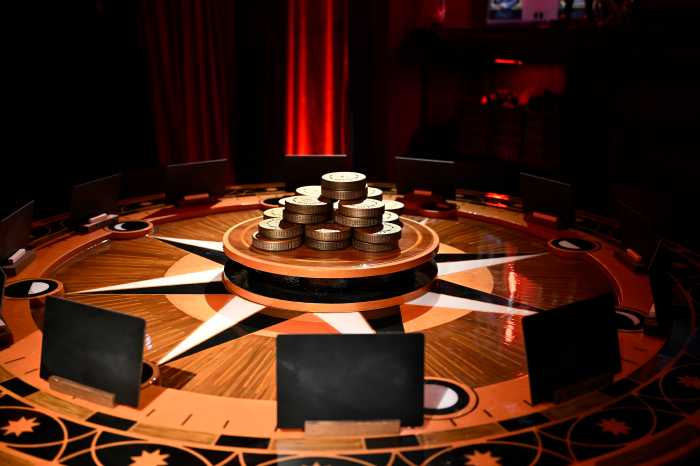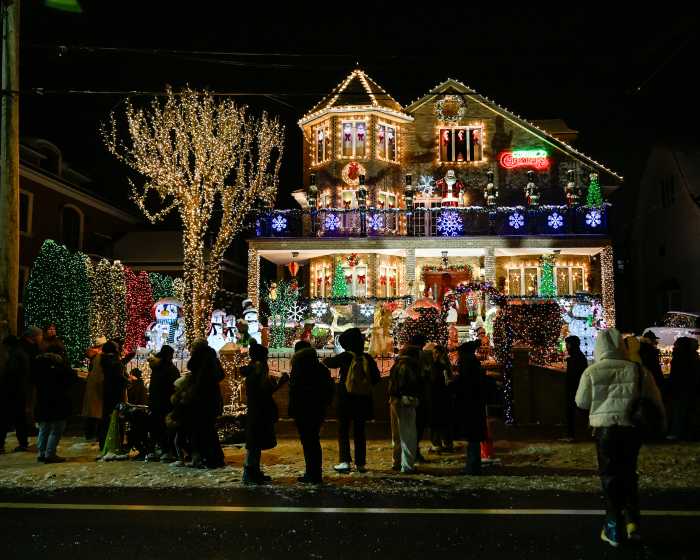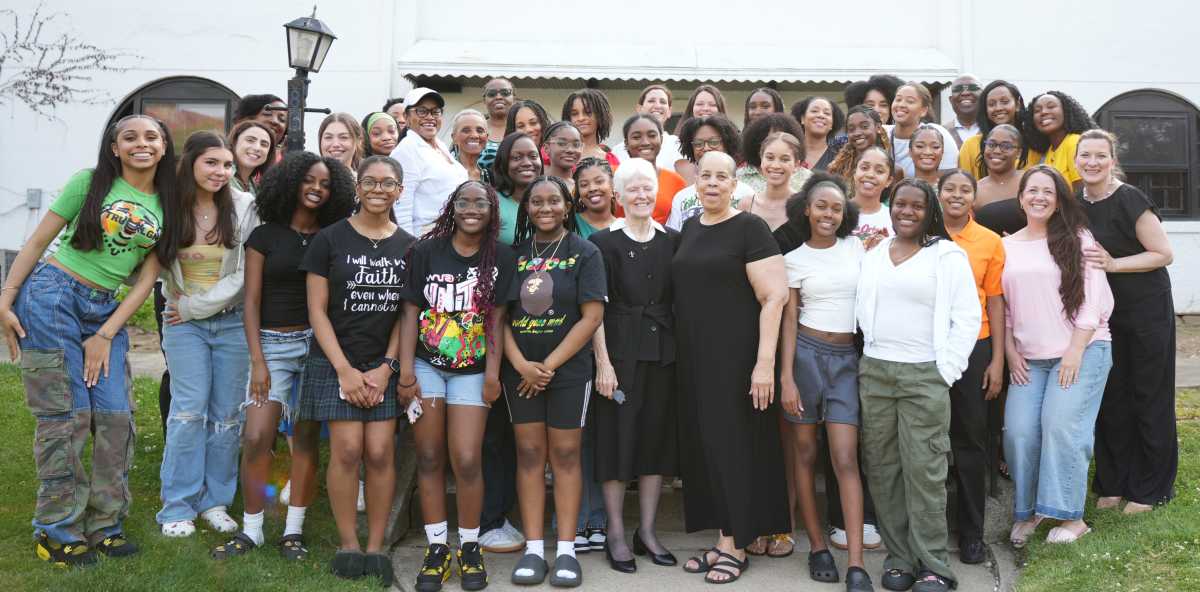Were you ever amazed at a belly dancer’s
ability to shake her hips, shimmy her shoulders, twirl her hands,
twist and turn her stomach while glancing flirtatiously around
the room – all at the same time?
I was.
I wanted to know how she managed to look graceful – even seductive
– when an average person, in an attempt to do the same, would
appear as though he or she were experiencing a series of spasms.
I have always wanted to know how to execute those impossible-looking
moves, but was afraid to try – until last weekend. I am proud
to announce that I have deposited two successful belly dancing
classes into my limited bank of exercise experience.
Not exactly someone you’d call a fitness nut, I am more likely
to cringe at the mere thought of going to the gym than stick
to a strict regimen. But I am always looking for innovative ways
that might encourage my inner fitness-o-holic to come out of
its closet. And since I love to dance – which by no means implies
that I know how to – I jumped at the prospect of trying out the
art of traditional belly dance as a form of exercise.
I think I might have found my calling.
In her book "Bellydancing for Fitness: The Sexy Art that
Tones Your Abs, Butt, and Thighs" (Fair Winds Press, 2004),
author Rania Androniki Bossonis, an Aerobics and Fitness Association
of America-certified fitness instructor and professional Middle
East dance teacher, writes that belly dance is an ancient ritual
dance rooted in the Middle East and North Africa.
This type of dance first reached the United States in 1893 during
an exhibition of Middle Eastern dance and culture by Sol Bloom
at the Chicago World’s Fair, where the term "belly dance"
was created, writes Bossonis.
"It is characterized by articulated isolation movements,
undulations, intricate patterns of hip isolations, ribbon-like
arm and torso undulations, percussive locking movements, circular
hand movements, and shaking or fluttering movements (shimmies),"
writes Bossonis.
In addition to physical benefits, such as improved coordination,
balance, muscle tone and posture, Bossonis lists a series of
"social and mental/emotional" rewards of belly dancing
such as reduced stress, opportunities to meet people with common
interests and a feeling of accomplishment "from mastering
a new skill."
Class One: Middle Eastern
Petite Autumn Ward, 32, could not look any less Middle Eastern
with her fair, freckled skin, light eyes and strawberry-blond
hair, which she wore in a long braid. But the moment she put
on her costume – a red-velvet, torso-revealing top and a matching
floor-length fitted skirt with a slit down each side to allow
for unrestricted movement – let her waist-length hair down and
started dancing for the camera, it was evident that she was in
her element.
A former gymnast from Carlisle, Pa., Ward, now a Greenpoint resident,
has been practicing belly dancing since 1997 and teaching it
for the past six years, first in Washington, D.C., and now in
New York.
"People in the class look like Brooklyn," said Ward
of her Park Slope and Williamsburg student body. "They are
mixed in ages, race, ethnicity and nationality."
Ward’s dance style and technique combines Egyptian and Iranian
folk and social traditions with classical ballet influences.
"I would like to give the general public a better idea of
Middle Eastern dance," she said.
Ward teaches four classes a week – an intermediate class at Spiral
Flow in Williamsburg and three classes, ranging from beginner
to intermediate-advanced on Saturdays at Spoke the Hub in Park
Slope.
"What I like so much about [Ward’s classes] is that they
are small," said Jennifer Gonzales, 21, after her third
class. "If you need extra attention, she’ll stand there
and help you." Gonzales said she likes that there is no
pressure if you don’t know what you’re doing.
Although you don’t have to be a certain body type to belly dance,
said Ward, you have to be fit, strong and flexible in order to
properly execute the movements. (She is an advocate of pilates,
too.)
In addition to improving flexibility, strength, stamina and poise,
Ward said that belly dancing can also be spiritually rewarding
in that it makes women feel better about their bodies.
Class Two: American Tribal
Trisha Ann McBride, 29, begins teaching her class at Greenhouse
Holistic, in Williamsburg, with a 10- to 15-minute meditation
session.
"I want people to come in and drop their excess baggage
at the door," McBride said, adding that leaving their worries
behind helps improve the flow of the dance movements.
A Salt Lake City native, McBride began her belly dancing career
nine years ago in the American cabaret style, a blend of Middle
Eastern and Western dance which involved glitzy, sequined costumes
and the use of a veil.
McBride moved towards the American tribal style because she said
that it empowered the woman. Leaving the glitz behind, the tribal
dance employs more traditionally ethnic costumes and jewelry
with influences from Pakistan, India, Afghanistan and North Africa,
explained Bossonis in her book.
And the differences between McBride’s and Ward’s styles were
reflected in the atmosphere in the classroom, the teaching style
and the costumes the instructors wore. McBride’s black cropped
shirt and the long flowing cotton black skirt was almost the
exact opposite from Ward’s vibrant red stage costume.
(Ward does not teach in her costume, instead wearing a comfortable
workout outfit, like the rest of the students, adorned with a
bead- and coin-decorated hip scarf – to help them know if their
hips are moving with the music.)
In addition to being all-female, there were also many other similarities
between the two classes – starting with the instructors’ passion
for belly dance, which was reciprocated by their students.
If I had to pick between the two instructors and their dance
styles, I wouldn’t know which one to choose. Ward’s structured
teaching technique of detailed explanations of every move helped
me to see and learn exactly how the dancing is done the right
way. She continuously moved from one side of the room to the
other, tirelessly making sure that everyone was keeping up.
On the other hand, I liked the energy created by the fast flow
of McBride’s class, which really makes you sweat. Even though
I was not always sure if I was doing the right thing, we learned
a great variety of moves that made for a fun dance. McBride also
repeatedly provided us with very clear instruction.
Ward’s style was graceful and elegant with delicate – but at
the same time intricate – moves while McBride taught a more raw
and energetic dance style full of big powerful movement. What
the two had in common is an air of feminine sensuality that makes
the students in both classes come back for more.
"[Belly dancing] is amazing for female organs," said
McBride. "It’s good for giving birth because it strengthens
that whole area." It eases PMS and cramps, several students
agreed.
But most importantly, belly dancing seems to improve a woman’s
image of herself.
"I am so glad I never pursued ballet," said McBride.
"I’d have a completely different body image."
She encouraged the class, "Ladies, shake it if you got it."
Autumn Ward offers new beginners, continuing beginners and intermediate/advanced
belly dancing classes on Saturdays at 11:30 am, 12:30 pm and
1:30 pm, respectively at Spoke the Hub at 748 Union St. between
Fifth and Sixth avenues in Park Slope and intermediate classes
on Wednesdays from 6:30 pm to 8 pm at Spiral Flow Yoga studio
at 302A Bedford Ave. between Grand and S. First streets in Williamsburg.
Classes are $15 for one hour. For more information, call (917)
686-1622 or visit the Web site at www.brooklynbellydance.com.
Trisha McBride offers belly dancing classes on Sundays from 2:30
pm to 4 pm at the Greenhouse Holistic studio located at 88 Roebling
St. at N. Seventh Avenue in Williamsburg. Classes are $14 each.
For more information call (718) 599-3113 or visit the Web site
at www.greenhouseholistic.com.
"Bellydancing for Fitness: The Sexy Art that Tones Your
Abs, Butt, and Thighs" (Fair Winds Press, $19.95), which
comes with a CD of Middle Eastern music, is available at, or
can be ordered through, local bookstores.

























